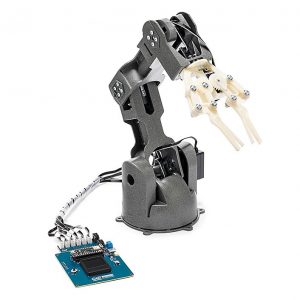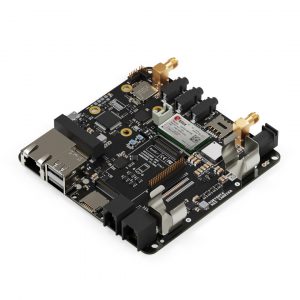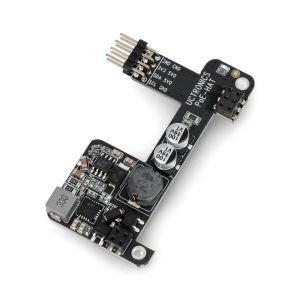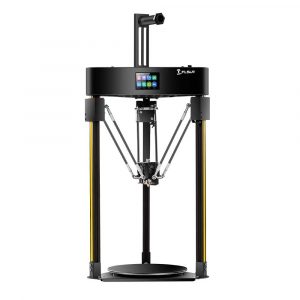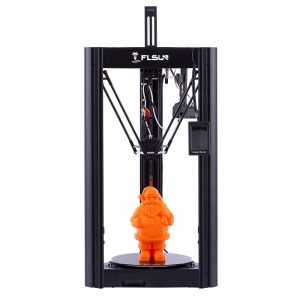Table of Contents:
Since the last time, when we presented the novelties in Botland, it got steamy a few times. And it’s not about the fact that soon we will say goodbye to spring and hello to summer – at the sight of some of the equipment the hearts of electronic fans can beat faster.
In addition, the atmosphere is not cooled at all by promotional actions of Snapmaker and Ugearsmodels, which are still going on for a few days. In the case of the former, it is a result of celebrating the sixth birthday, and discounts on selected products range from 15 to 25%. Unique Ugears models can be purchased 15% off, with 15 of them being discounted.
Well, without further ado, let’s see what all the fuss was about.
Arduino Braccio ++
In the workshop, on projects and on various specialist workstations, every helping hand is worth its weight in gold. Well, a hand is good, but why not a whole arm?
Robotic arms undoubtedly generate a lot of excitement. People who see them for the first time may feel like they are in a science fiction film, and professionals are overwhelmed at first sight with ideas for their use.
We already have several models at Botland, and they have been joined by the Arduino Bracio ++. This is the next incarnation of the robot arm from Arduino, the successor to the Braccio TinkerKit+. The overarching goal in designing this generation was to teach the use of such hardware for higher education purposes – technical colleges, university technical institutes, engineering, industrial or technology schools will be the places where the new robot will be most easily encountered.
The arm works on a Braccio Carrier board, the heart of which is the Arduino Nano RP2040 Connect. It has an LCD screen and uses RS485 and RS232 communication protocols. It moves through servos and the body is made of environmentally friendly EcoAllene plastic. It is powered by USB-C.
Compared to its predecessor, the motherboard has been replaced, an Arduino board has been added to the kit, 100 per cent recyclable ABS plastic has been replaced and new teaching materials have been added.
Arduino Portenta X8 and Max Carrier
Moving deeper into industry, but still staying with Arduino – another new addition to our shop is the new Portenta X8 board along with the Portenta Max Carrier board. The X8 module is an innovation in the Arduino world, due to its support for pre-installed Linux on one of the two microprocessors.
Such processing power from such a small chip hardly anyone could expect. The compact board gives us powerful capabilities because it offers a total of 9 cores. The board is also equipped with 2 GB of RAM and 16 GB of eMMC memory. The module is equipped with WiFi wireless connectivity and Bluetooth Low Energy, for example, for wireless software updates or OTA applications.
To squeeze even more capabilities into the industry, the Arduino Portenta Max Carrier board was premiered in parallel. It allows you to turn a Portenta module into a single-board computer. This applies to both X8 modules and the slightly older Portenta X7.
If we are going to extend capabilities of the board, we are talking about extensions such as Fieldbus, LoRa, Cat-M1 and NB-IoT, Ethernet, CAN, RS232/422/485, USB, mPCIe, micoSD slot, audio jack, JTAG debugger and the ability to have its own power supply – Max Carrier is powered by 6V to 36V or 18650 Li-Ion battery, through a dedicated connector with charger circuit. Such a set of additional capabilities will certainly facilitate the introduction of new technologies within industrial projects and bring us even closer to a smart industry based on IoT.
Add-on for Raspberry Pi. PoE HAT
Relax, for those electronics fans who are on the side of the Raspberry Pi there is also something new. And of course there are quite a few of them, as it is well known that Raspberry minicomputers have a lot of more or less standard applications. From the simplest projects to advanced projects such as controllers. In fact, we can already find Raspberry hardware even in the Earth’s orbit.
Versatility is further enhanced by various add-ons that increase the number of connectors, add new features, or enable functionality we could not achieve before. An example of such extension is a new acquisition of our shop – PoE HAT for Raspberry Pi.
As the name of the device suggests – PoE (Power over Ethernet). The cap allows you to power your Raspberry Pi using an Ethernet cable. It is compliant with IEEE 802.3af standard. The input voltage of the module extends from 40 V to 57 V and is equipped with a number of protections. Output voltage of the cap is 5 V / 2.5 A, so for a minicomputer like to find.
An added bonus is that by using the expansion board, we still have undisturbed access to the entire set of GPIO outputs. We can then continue to enjoy the full functionality of the Raspberry, and even augment it with another overlay.
Friend of the house. MarsCat
The animals theme in electronics doesn’t come up very often. Of course, the best-known example of how the two worlds are combined is the Spot from Boston Dynamics, which comes closest to being a robotic version of a dog, but it’s just now time to look at the other side of the pet concept – the feline side.
Fully autonomous, friendly and eager to play – that is the MarsCat developed by Elephant Robotics. Its main task is to entertain and surprise its owner. It is fully responsive – it plays with toys, feels touch, distinguishes voices and faces. Depending on how he is treated and how he is stroked, his personality also changes and you can summon him with a command (although this is not an everyday occurrence with all cats).
All right well, he sounds like a real pet, but let’s not forget that he also represents quite a bit of technology. Its heart beats like a Raspberry Pi 3B. It uses 6 touch sensors, a TOF sensor and a gyroscope to communicate with the world, a 5 Mpx camera, a USB-C and miniHDMI microphone and speaker interface, a 1.5″ display (eyes) and supports Wifi and Bluetooth communication. The bionic cat is made of plastic, rubber and glass, and the user can choose colours such as white, grey, red and black. It has enough energy to play with at 6800 mAh.
The fun continues. IME3D X-KIT
Staying on the theme of entertainment and fun, let us move on to the next item. Children grow up quickly and unfortunately they get bored with their toys just as quickly, often abandoning them in an almost untouched state. But what to do when parents don’t want to flip through the cuddly toys but want their little ones to continue playing nicely?
For many in a similar situation comes the X-KIT educational kit. It consists of basic elements for building an educational robot. It is a platform equipped with motors and wheels, which can be freely varied with additional elements. These, you can print yourself on a 3D printer thanks to a special application that also enables remote control, thus creating a personalised educational toy. The principle is simple: You get bored of the dinosaur? Convert it into a car!
The kit also includes an educational map, distance sensor, buzzer, wires and assembly parts. The set for designing and coding robots adjusts its level of difficulty to the age of a child. So, you can be sure that the toy will not get boring quickly, especially that the child, apart from having fun, will also have an opportunity to learn how to use the modern technology of 3D printing and graphic programming.
3D printers from Flsun
And finally, step by step and moving from topic to topic, we finally land in the 3D printing thread. Here, we have two novelties, and their names are Q5 and SR. We are, of course, talking about 3D printers, but these are not the typical designs that we have usually seen. So what is so special?
3D printing as it is most commonly understood, i.e. in its basic form, consists in depositing liquefied material layer after layer, with the printer head moving in the X, Y and Z axis on gantries. And it is at this point that our two new products come onto the scene.
Both machines are based on a delta construction, whose main characteristic is the way the print head moves. Three efficient stepper motors are responsible for precise movement in X, Y and Z axes. Thanks to such a construction, the printers enable fast printing while maintaining high quality of the final models. The speed of the devices is also a distinctive feature among the competitive mechanisms – such a system allows to obtain the finished model in a much shorter time than the traditional printing method. Their assembly is also not time-consuming, taking only several minutes.
However, there are two models, which differ in individual parameters, so let us have a closer look at their technical specifications:
Flsun Q5
- 32-bit motherboard with TMC2208 stepper motor drivers,
- Working area 200 x 200 mm,
- Self-leveling – 27 points hotbed,
- Supports PLA, ABS, TPU filaments,
- Touch screen 2,4″ display
- Repetier software.
Flsun SR
- 32-bit motherboard with TMC 2209 controllers,
- working area of 260 x 330 mm,
- support of PLA, ABS, PETG filaments,
- 3.5″ touch screen display
- Marlin software.
Add Your Heading Text Here
It is not going to slow down with the news from Botland, in fact the opposite – recently, in parallel to the series of news, we have added news from SparkFun and compilations of educational materials, which can be useful to everyone, regardless of the already existing knowledge, or even lack of it, and also without depending on the level of advancement of your electronic projects. So expect more news on the Botland blog.
Until the next one!
How useful was this post?
Click on a star to rate it!
Average rating 0 / 5. Vote count: 0
No votes so far! Be the first to rate this post.

